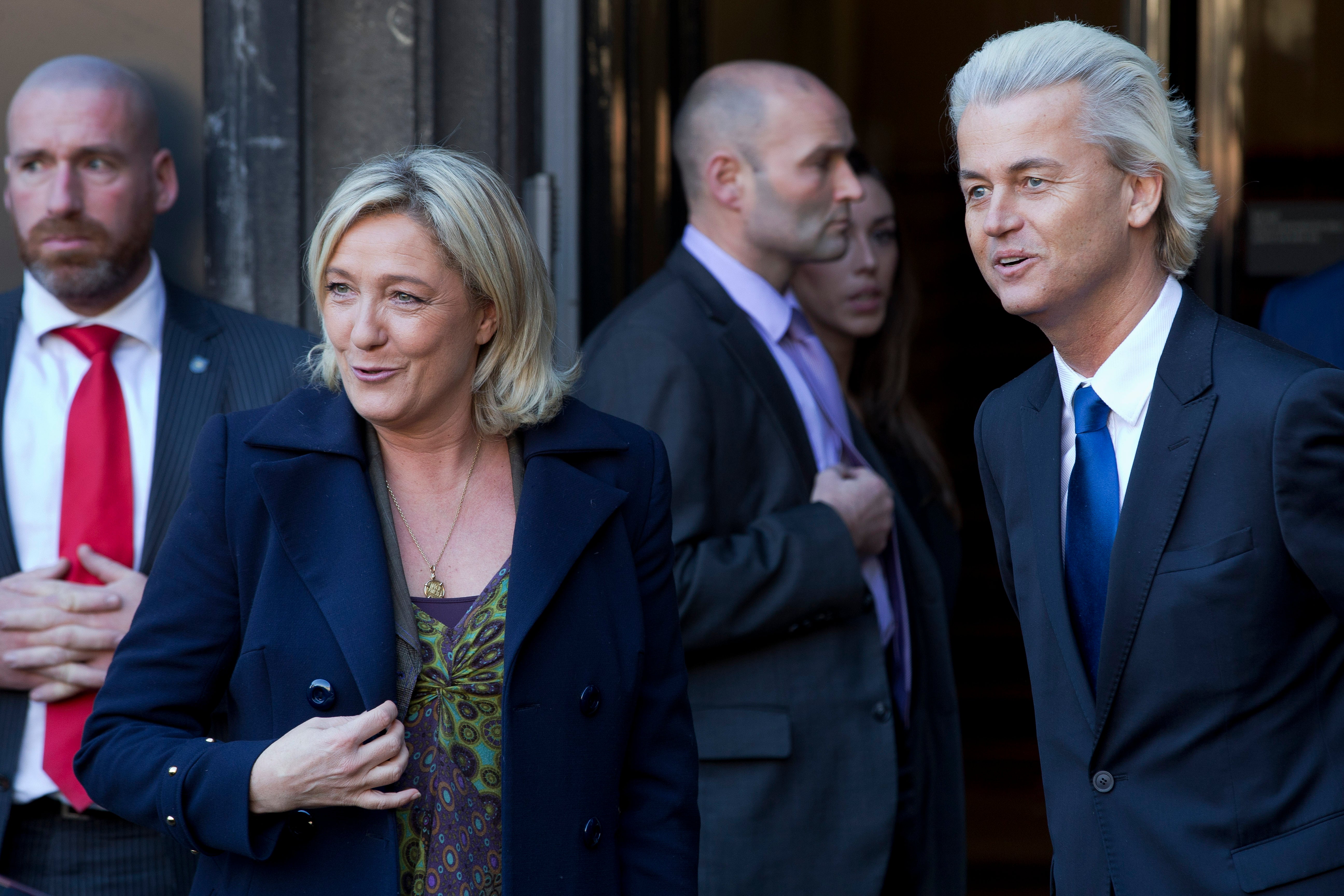The rise of the far right is rewriting Europe’s political landscape
With the rise of populists like Marine Le Pen and Geert Wilders, the centre right is giving way to the fringes, writes former Europe editor for CNN Nina dos Santos. Is the EU prepared for the balance of power to shift – and by how much?


Coming together for their conference in Bucharest this month, the leaders of Europe’s conservative parties appeared at first glance triumphant.
Since their last gathering two years ago, the centre right has gained ground, finding itself in government across large parts of the European Union with a bigger say inside the bloc’s key institutions.
EU conservatives – campaigning together as their collective European People’s Party – are on track to score the most seats in upcoming elections for the European parliament, over which Malta’s centre-right Roberta Metsola currently presides.
Meanwhile, their candidate to helm the European Commission, Ursula von der Leyen, is likely to secure a second term, navigating an era to which the centre-right narrative naturally lends itself: with security and the economy at the forefront of the electorate’s minds.
Yet behind the polished performance lies one key conundrum: how to tackle an adversary from one’s own side of the political spectrum amid a surge in support for Europe’s far right.
This month the rise of a populist party helped prevent Portugal’s centre right from clinching a majority, despite it unseating the socialist incumbents. The result could mean a weak government that may have to make ad hoc concessions to pass new laws.
Over in Sweden, where the far right has been part of the ruling coalition since 2022, this trend is well under way, as evidenced by a recent crackdown on law and order and a tougher stance on immigration.
In Slovakia and Hungary, populist leaders are in charge, and have over the years regularly used their leverage to challenge EU unity on the most pressing issues of the day.
“Europe’s political centre of gravity is certainly tilting towards the right,” says Jerry Zagoritis, founder of the Brussels-based political strategy firm Campaign Lab, which has advised centre-right parties across the EU.
“You are already seeing it in the campaigns, where the current environment is causing moderates to increase their emphasis on migration, on defence, and to focus on themes like safety and economic and social security,” he says.
In short, the far right is already being heard, and soon it will be seen in greater numbers – especially inside the EU parliament.
As it stands, Europe’s fringe parties are on track to secure more than 25 per cent of the vote when 400 million of the bloc’s citizens can cast their ballots in June.
Such MEPs could frustrate attempts to tackle climate change and stymie the EU’s eastwards expansion ambitions to one day include Ukraine, Moldova and the Western Balkans.
But there isn’t any indication, Zagoritis says, that far-right factions are yet united enough to band together to consistently challenge the status quo.
“These parties can very much be opposed to each other on the crucial issues: such as how to deal with Russia,” he says.
“Some are pro-Ukraine, while others openly support the Kremlin,” he says.
The rise of Europe’s far right is hardly a surprise. Indeed, it has been under way for some time.
One centre-right official in Bucharest blamed France’s President Emmanuel Macron for causing the problem, when he founded his movement En Marche in 2016.
“He’s torpedoed the centre ground for everyone”, the official said, “and left us to deal with the mess.”
Others argue populism will always have its appeal, promising simple solutions to problems that traditional parties have proved unable to tackle.
What is clear is that the cost of living crisis and Covid have accelerated the shift, pushing middle-class voters further down the socio-economic ladder and into the hands of fringe elements.
Even Europe’s farmers, whose livelihoods have in the past been safeguarded by the EU’s Common Agricultural Policy, are now embracing radicals.
However, just as Europe’s centre-right might be tempted to accommodate some far-right policies to neutralise the threat, there is evidence the far-right parties recognise some of their more aggressive initiatives are turning voters off.
As such, they are turning more towards the centre.
Marine Le Pen of France’s National Rally has ditched her plans for a so-called Frexit, and recently condemned Russia’s invasion of Ukraine despite once being an unapologetic admirer of Vladimir Putin.
Meanwhile the leadership of Germany’s AFD quickly distanced itself from reports of a clandestine meeting at which some members discussed deporting “unassimilated” compatriots.
Even Geert Wilders, fresh from electoral victory in the Netherlands but unable to form a government, appears to recognise the far right can be equally influential when exerting pressure from outside the establishment rather than actually running a country.
Still, the rise of Europe’s right matters because it is fast altering the landscape across one of the world’s biggest democratic unions, at a time when autocracy is on the rise elsewhere.
It could move the dial for years to come.
Just how far remains to be seen.
Nina dos Santos is an award-winning international broadcaster and journalist who was formerly CNN’s Europe editor






Join our commenting forum
Join thought-provoking conversations, follow other Independent readers and see their replies
Comments